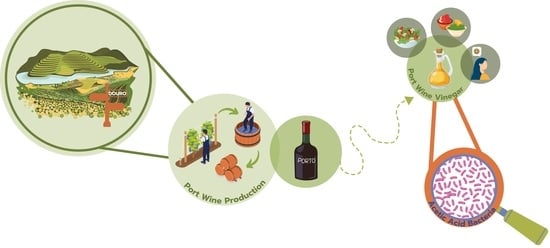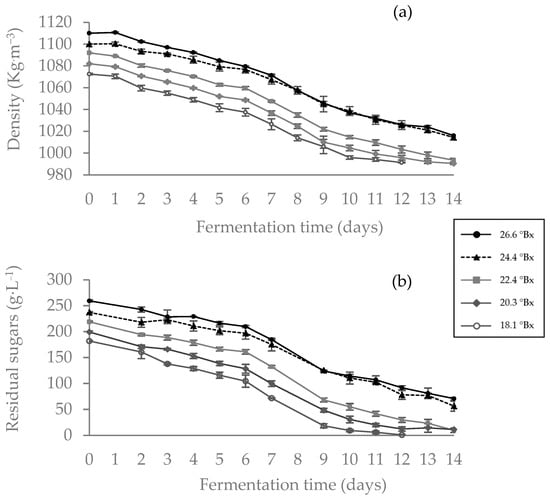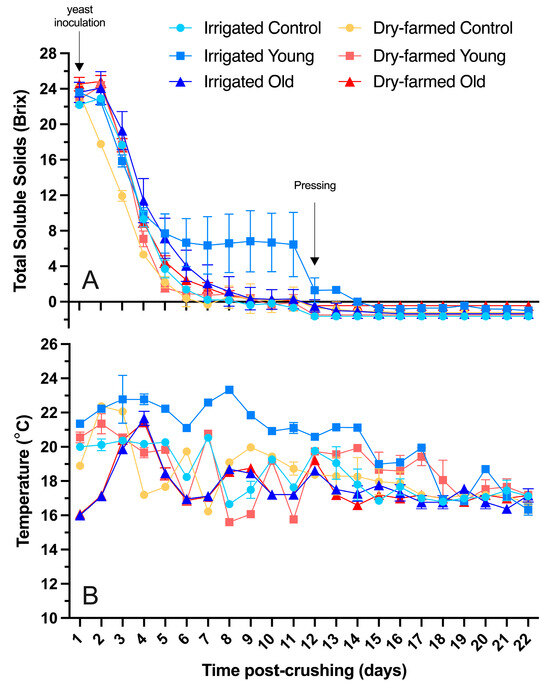New Aspect on Wine Fermentation (Closed)
A topical collection in Fermentation (ISSN 2311-5637). This collection belongs to the section "Fermentation for Food and Beverages".
Viewed by 15912Editor
Interests: wine microbiology; volatile acidity bio-reduction; food sensory evaluation; wine sensory evaluation
Special Issues, Collections and Topics in MDPI journals
Topical Collection Information
Dear Colleagues,
The world is changing, and the COVID-19 pandemic is showing that we must take care of ourselves and, not less important, the environment.
Wine consumers worldwide are also changing their behavior when deciding which wine to purchase. This change includes consumers’ purchasing decisions based on how well products satisfy their needs, in terms of pleasantness, health, and nutritional value, as well as how these products affect the environment.
Modern winemakers must promote fermentation that can produce high levels of polyphenols and other health-promoting compounds and, at the same time, minimize concentrations of risky wine ingredients such as sulfites, biogenic amines, heavy metals, mycotoxins, and proteins with allergenic potential.
Therefore, winemakers have been facing additional challenges due to current market demands.
Moreover, they must design wines exhibiting more individual flavors when working with grapes grown under stressful conditions due to distinct climate changes. Innovative winemaking techniques and new yeast strains contribute to solving some of these problems including the increased sugar concentration of grapes at grape maturity and stuck fermentations that may occur under nitrogen limitations.
The current advances in “omics” technologies and analytical techniques have permitted us to better understand the grape/wine microbial ecosystem and have revealed new perceptions into wine microbiology. It is well-known that non-conventional Saccharomyces species considered as spoiling microorganisms in the past are valued as being beneficial today, as they improve the wine aroma profile when grown in controlled mixed starter fermentations together with S. cerevisiae. Additionally, current biological approaches are in progress for wine deacidification using Saccharomyces yeasts, in addition to the traditional lactic acid bacteria Oenococcus oenii and Lactobacillus plantarum.
The advance in molecular techniques has allowed the construction of yeast species already with the status of ‘Generally Regarded As Safe’ (GRAS) from the FDA and, therefore, able to be commercialized. The ML01 yeast, a Prise de Mousse strain that contains the malate transport gene (mae1), and the 522EC- urea-degrading yeast, able to reduce the production of ethyl carbamate in wine, are genetically manipulated yeasts already available in the market.
Notwithstanding these advances, we are still far behind in knowing all about the diverse and vital roles of different microbial species, namely, yeasts and bacteria, in wine production, quality, and safety. Several questions regarding the role of individual microorganisms or possible microbial interactions during wine production remain to be answered, including microorganisms that may negatively affect wine quality.
This Topical Collection includes innovative studies aiming to address wine consumers’ challenges not only in terms of product quality but also in terms of environmental consciousness.
Dr. Alice Vilela
Collection Editor
Manuscript Submission Information
Manuscripts should be submitted online at www.mdpi.com by registering and logging in to this website. Once you are registered, click here to go to the submission form. Manuscripts can be submitted until the deadline. All submissions that pass pre-check are peer-reviewed. Accepted papers will be published continuously in the journal (as soon as accepted) and will be listed together on the collection website. Research articles, review articles as well as short communications are invited. For planned papers, a title and short abstract (about 100 words) can be sent to the Editorial Office for announcement on this website.
Submitted manuscripts should not have been published previously, nor be under consideration for publication elsewhere (except conference proceedings papers). All manuscripts are thoroughly refereed through a single-blind peer-review process. A guide for authors and other relevant information for submission of manuscripts is available on the Instructions for Authors page. Fermentation is an international peer-reviewed open access monthly journal published by MDPI.
Please visit the Instructions for Authors page before submitting a manuscript. The Article Processing Charge (APC) for publication in this open access journal is 2100 CHF (Swiss Francs). Submitted papers should be well formatted and use good English. Authors may use MDPI's English editing service prior to publication or during author revisions.
Keywords
- wine aroma and flavor
- starter cultures
- mixed fermentations
- stuck fermentations
- yeast hybrids
- genetically modified microorganisms
- microbial ecology
- enzymes
- malolactic fermentation
- human health











